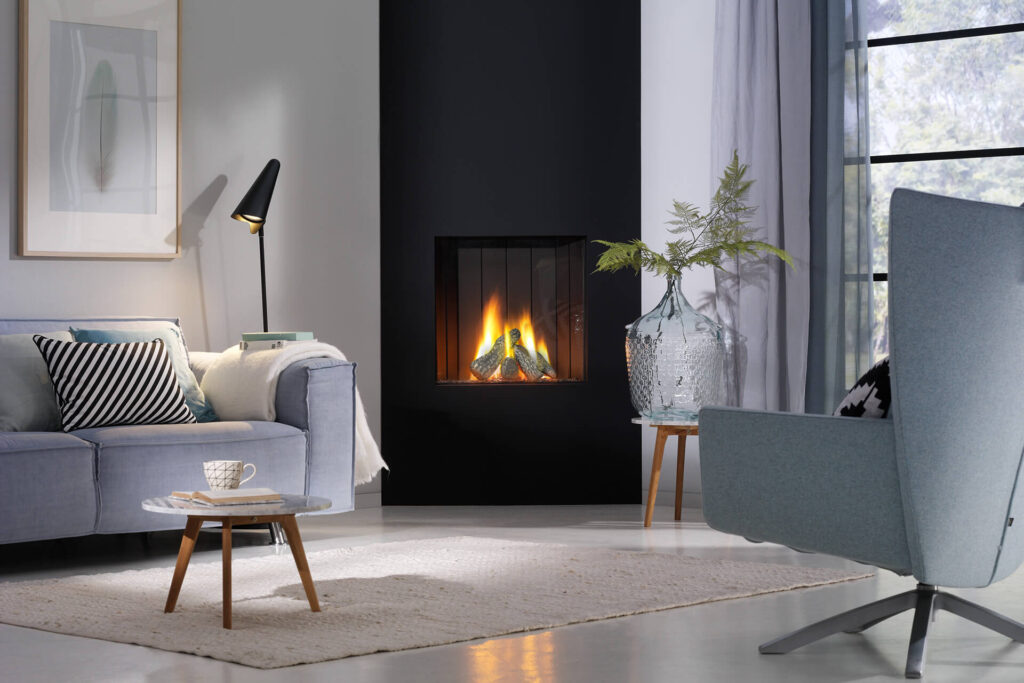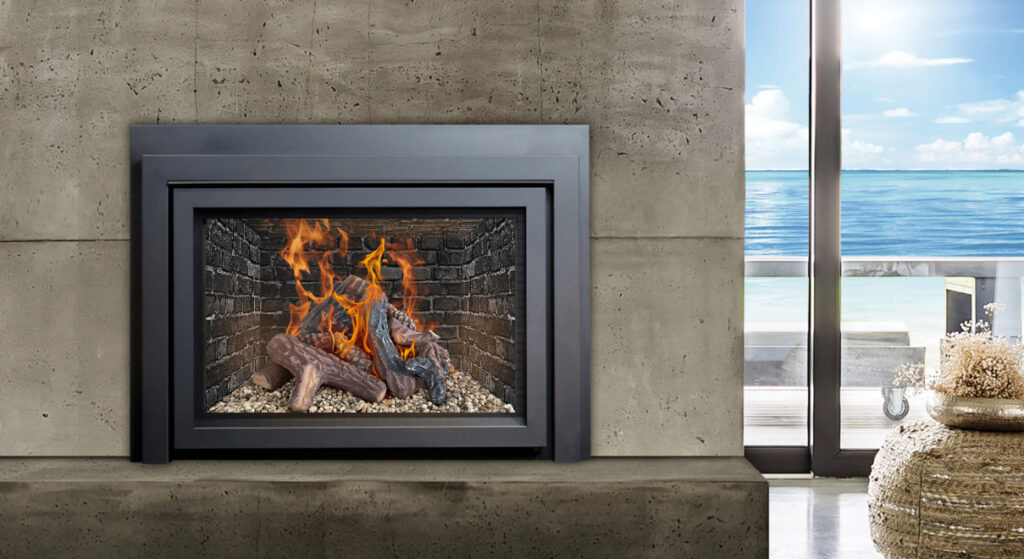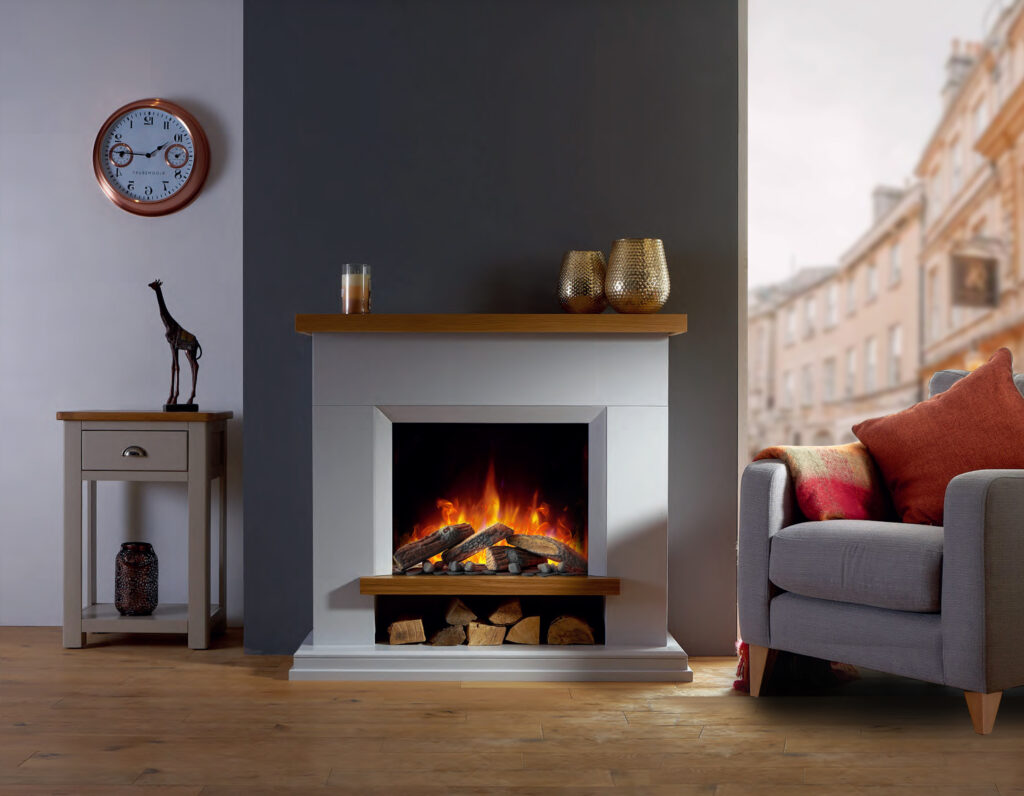When designing a new fireplace for your home, a gas stove is a modern option worth considering. A propane or natural gas fireplace with ceramic gas logs offers the warmth and ambiance of a traditional wood-burning fireplace—without the mess, maintenance, or hassle. These gas logs utilize advanced technology to deliver instant, consistent heat and a welcoming atmosphere at your convenience.

Gas Log Installation
A gas log system includes a set of ceramic logs and a gas supply line, typically integrated with a gas meter and connected pipes. The ceramic logs are designed to fit a variety of fireplace styles and can be arranged to mimic natural wood. Invisible gas flows through tiny holes in the logs and ignites on the surface, producing a steady, realistic flame that burns cleanly and efficiently.
Simple Ignition Process
Lighting a gas log is quick and easy—far simpler than building a traditional fire. Depending on your setup, the system may be activated with a manual control knob, an electronic ignition, or even a remote control. This makes operation fast, safe, and user-friendly.
Fire Safety Precautions
Before using ceramic gas logs, proper fire-resistant measures must be taken. Your installer may line the fireplace base with fireproof materials like lava rock or sand to prevent the flame from spreading. Additionally, protective glass panels can be installed for enhanced safety and aesthetic appeal. Once installation and safety checks are complete, you can sit back and enjoy the warmth of your new fireplace with peace of mind.
How to Use Your Fireplace Without Risk
Fireplaces add warmth and charm to any home, but they also require careful attention to ensure safe operation. By following these key safety measures, you can enjoy the comfort of your fireplace while minimizing risks.

01. Maintain a Clear Surrounding Area
Fireplaces and their components reach extremely high temperatures during and after use. To prevent accidents, always keep flammable materials—such as clothing, furniture, curtains, and decor—at a safe distance.
02. Install a Safety Barrier
A secure safety barrier is crucial to prevent burns, especially when the fireplace is in use. A protective screen helps block direct contact with hot glass, significantly reducing the risk of injury. Never remove or modify the screen, as it serves as a vital safeguard.
03. Exercise Caution During and After Use
The glass and metal parts of a fireplace can remain dangerously hot long after being turned off. Always supervise children and pets, ensuring they stay at a safe distance to avoid accidental burns.
By staying vigilant and following these guidelines, you can enjoy the beauty and warmth of your fireplace with peace of mind.
Choosing the Right Type of Gas Fireplace for Your Home
With a wide range of gas fireplace options available, it’s important to carefully evaluate your needs before making a purchase. One key consideration is whether your setup will use an existing chimney or require new ventilation. Below are three common types of gas fireplaces—built-in units, fireplace inserts, and freestanding gas stoves—each offering distinct advantages, limitations, and design appeal.

1) Built-In Gas Fireplaces
Built-in gas fireplaces are complete, prefabricated units designed to fit into framed enclosures, custom wall spaces, or fireplace cavities. They require a dedicated ventilation system, which must be safely installed with proper clearance from combustible materials. Venting can be routed through exterior walls or existing chimneys, provided compatible components are used to meet safety standards.
2) Gas Fireplace Inserts
Gas inserts are specifically engineered to fit inside existing masonry fireplaces, making them a popular choice for upgrading old wood-burning units. They require the installation of a venting system within the existing chimney structure to ensure both safety and energy efficiency.
3) Freestanding Gas Stoves
Freestanding gas stoves offer greater installation flexibility, especially in rooms with ample floor space. These units are self-contained and can be placed virtually anywhere in the home, as long as ventilation requirements and clearance regulations for combustible materials are met. Unlike built-in or insert models, freestanding stoves don’t need wall recesses, making them ideal for spaces without existing fireplaces.
